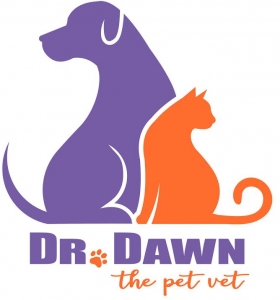 A recent article in a veterinary journal highlighted news that an advocacy group is challenging the EPA over the safety of some flea collars. The chemicals tetrachlorvinphos (TCVP) and propoxur are used in some dog and cat flea collars. The Natural Resources Defense Council wants the chemicals eradicated from the pet industry. To that end, it sued the U.S. Environmental Protection Agency (EPA) recently to force a decision. I think it is important that clients be educated about this issue. Two specific companies that supply these collars are named. The same two companies, for decades, have also produced flea dips that I have personally seen cause countless, severe, and sometimes life threatening reactions on dogs, and mainly cats. From adverse neurologic reactions, to chemical skin burns, these over the counter products are readily available, and often confused with other OTC products that look similar, but contain different active ingredients, in different concentrations. Some clients have inadvertently applied dog products to cats, which, although a user mistake, highlights the small margin for error and toxicity of the products.
A recent article in a veterinary journal highlighted news that an advocacy group is challenging the EPA over the safety of some flea collars. The chemicals tetrachlorvinphos (TCVP) and propoxur are used in some dog and cat flea collars. The Natural Resources Defense Council wants the chemicals eradicated from the pet industry. To that end, it sued the U.S. Environmental Protection Agency (EPA) recently to force a decision. I think it is important that clients be educated about this issue. Two specific companies that supply these collars are named. The same two companies, for decades, have also produced flea dips that I have personally seen cause countless, severe, and sometimes life threatening reactions on dogs, and mainly cats. From adverse neurologic reactions, to chemical skin burns, these over the counter products are readily available, and often confused with other OTC products that look similar, but contain different active ingredients, in different concentrations. Some clients have inadvertently applied dog products to cats, which, although a user mistake, highlights the small margin for error and toxicity of the products.
In the suit, Hartz Mountain Corp., Sergeant’s Pet Care Products Inc, and Wellmark International defended the formulation of their flew collars, citing that they have provided all the requested relevant data to the EPA. Dr. Miriam Rotkin-Ellman a senior scientist with the Natural Resources Defense Council, called the two neurotoxic pesticides particularly dangerous to children and cited scientific literature that linked the chemicals to neurodevelopment problems. This is important because the chemicals may be transferred when a child touches a collar and then puts her hand in her mouth, the New York environmental action group stated.
 Both chemicals mentioned crossed the organization’s radar in 2000 when the council released its first “Poisons on Pets” report. Seven pesticides used in flea-control products were identified that the group considered particularly dangerous to children. In a second report in 2008, many pesticides had been removed from the market due to safety concerns, while TCVP and propoxur and other flea control product chemicals were still widely used. The council petitioned the EPA in 2007 and 2009, to no effect, leading to the current lawsuit. Currently the EPA is reviewing the petition. In the interim, the Natural Resources Defense Council is urging pet owners to shy away from these flea collars, made by Hartz, Sergeant’s and Wellmark. Considering the years it has taken to get this far, and that the products are currently considered safe and within the guidelines of the EPA, it falls upon pet owners to be their own pet’s advocate. Consider products that are recommended by your veterinarian. Recently, products that were only available through your vet are now available over the counter, which I feel leads to confusion on the consumer’s part. It is extremely important to make decisions based on the product and active ingredient, and not just on the price. They are not all the same.
Both chemicals mentioned crossed the organization’s radar in 2000 when the council released its first “Poisons on Pets” report. Seven pesticides used in flea-control products were identified that the group considered particularly dangerous to children. In a second report in 2008, many pesticides had been removed from the market due to safety concerns, while TCVP and propoxur and other flea control product chemicals were still widely used. The council petitioned the EPA in 2007 and 2009, to no effect, leading to the current lawsuit. Currently the EPA is reviewing the petition. In the interim, the Natural Resources Defense Council is urging pet owners to shy away from these flea collars, made by Hartz, Sergeant’s and Wellmark. Considering the years it has taken to get this far, and that the products are currently considered safe and within the guidelines of the EPA, it falls upon pet owners to be their own pet’s advocate. Consider products that are recommended by your veterinarian. Recently, products that were only available through your vet are now available over the counter, which I feel leads to confusion on the consumer’s part. It is extremely important to make decisions based on the product and active ingredient, and not just on the price. They are not all the same.
The council “drew upon an extensive body of independent research which has found measurable impact on children’s neurodevelopment linked to exposure to organophosphate pesticides”. They found 26 studies linking the chemicals to cognitive, behavioral and motor developmental defects, and attention deficit hyperactivity disorders. “We found nearly 300 reports which were related to exposure to a flea collar.” Previous suits resulted in manufacturers and retailers placing warning labels on products containing propoxur.
Also, Sergeant’s was quoted as “providing a line of natural flea and tick control products under the Sentry Natural Defense brand that are ideal for consumers seeking a natural alternative.” Again, as referenced in previous posts on this blog, reading the label is important. Natural may not be effective. Fleas, and particularly, ticks, can carry life threatening diseases, and they need to be controlled, and prevented from infecting your pets and family. And, flea collars, in my opinion, are ineffective in controlling fleas. There is a reason that these other topical treatments have been developed. It’s because flea collars don’t work on dogs, and barely , if ever, work on cats. The disease threat from flea and tick exposure is real and should not be underestimated. Nor should the importance of selecting the right, and safest form of effective prevention. Read the labels, and talk to your vet.
Dr. Dawn
Please share and subscribe here




